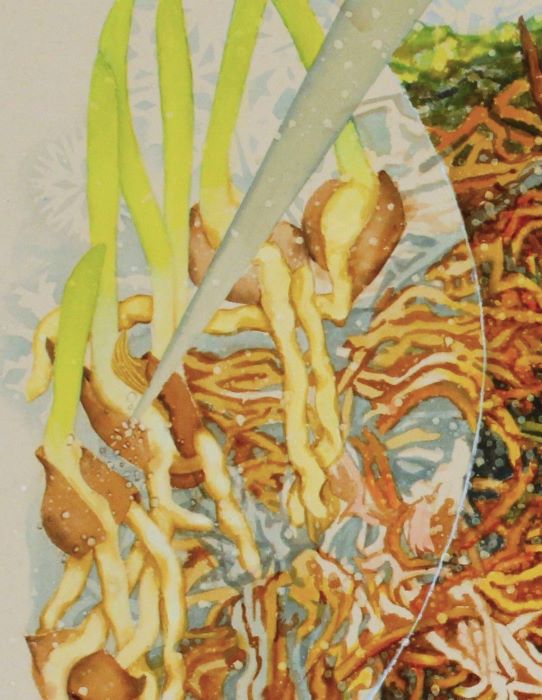“Hotspot” depicts a genomic experiment inoculating wetland plant seedlings (in the enlarged petri dish on the left) with microbe communities naturally found in the Athabasca Oilsands area. These microbes have proven to degrade the strongest, most toxic “diamonoid” naphthenic acids (NA’s) in tailings pond water, and are being identified according to their genes. In the middle of the painting, a natural “Hotspot” of wetland microbe communities effectively breaks down the toxic NA “diamonoids”.
This painting brings forth other “Hotspots” in the questions about commercial integrity, motives, and opportunities in and outside the project. When contemplating the pile of diamonds- mining, wealth, treasure, marriage, contracts, and partnerships came to the artist’s mind. When natural scientists discover or create microbe communities and plant combinations to make constructed treatment wetlands efficient (or “hot”) enough to clean tailings pond water, could “mining” specific place-based microbes be internationally lucrative? Would it support the expansion of more oil sand extraction into Saskatchewan, and the world, once the tailings water can be cleaned? Who are the financial partners? Where will the wealth go…to remediate the environment and affected community employment and health security? Or to who patents the technology? Or to the oil industry? What is the financial incentive to use passive constructed treatment wetlands in place of an alternative water treatment system?
Acrylic paint on Canvas
44′ h x 70″ w
Cheryl Buckmaster, 2024
University of Saskatchewan
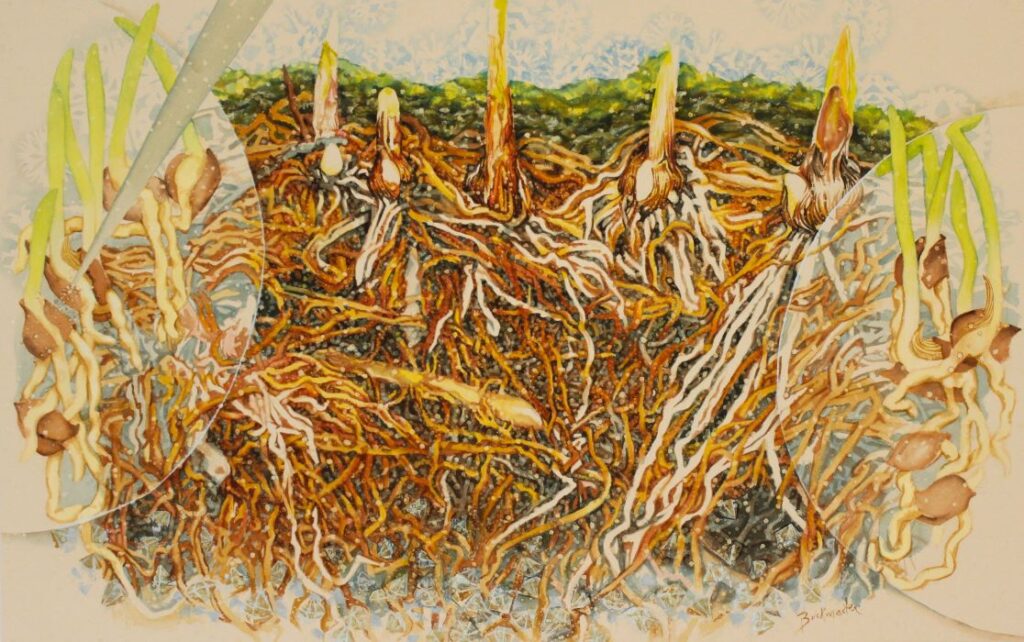
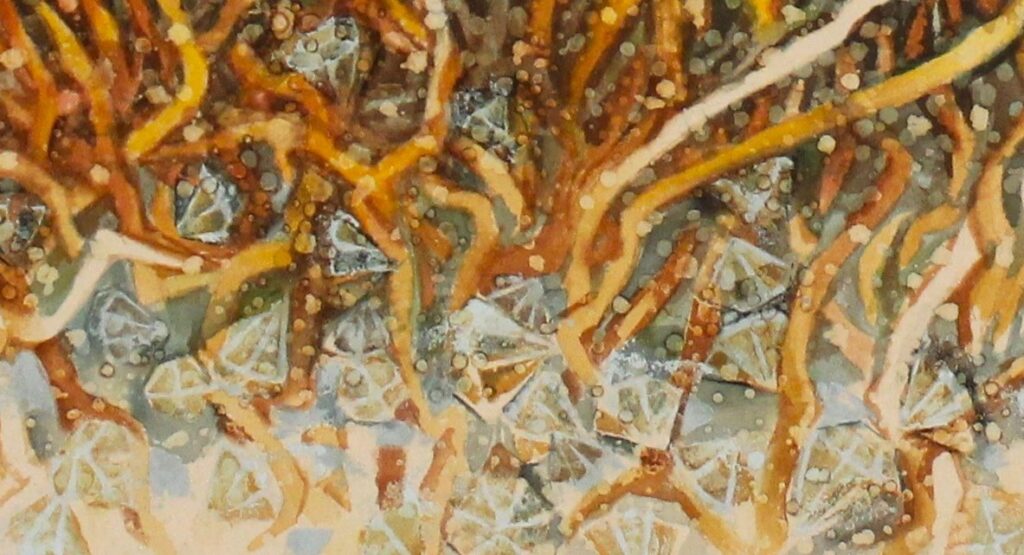
Hotspot Detail 1
(natural habitat roots degrading
diamondoid NA’s)
Hotspot Detail 2
(seedling or rhizome)
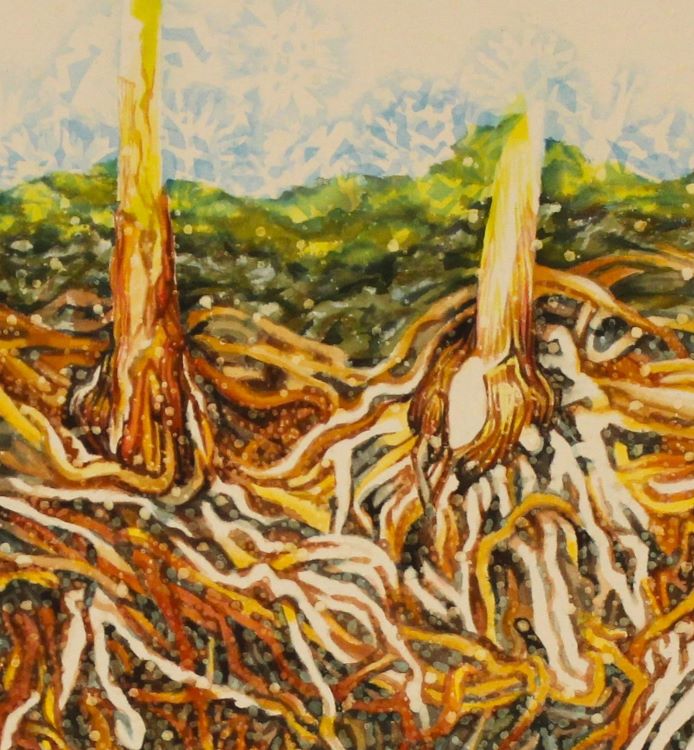
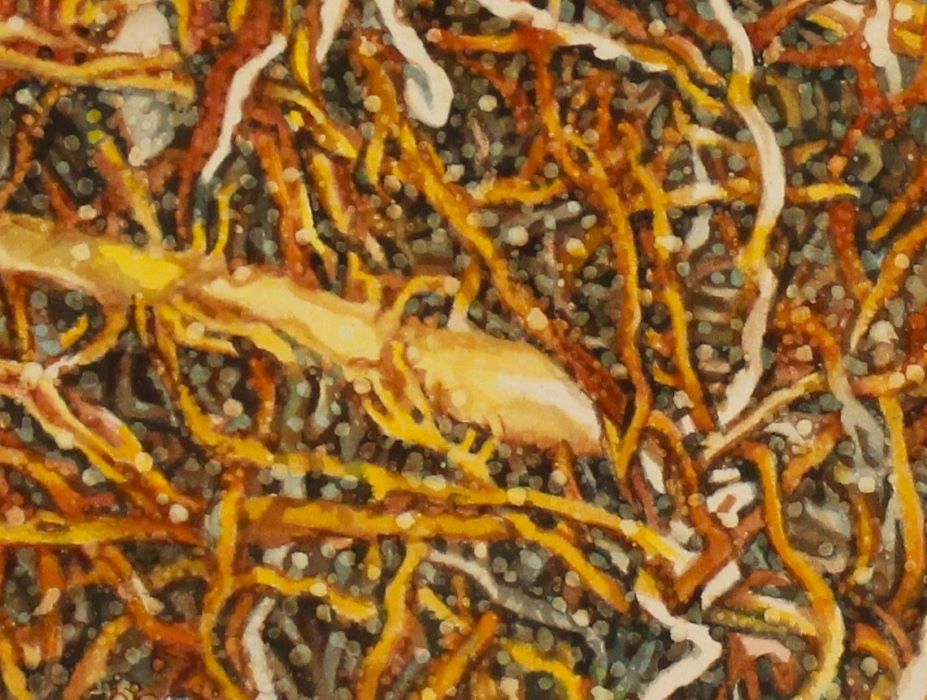
Hotspot Detail 3
(flourishing root microbe communities)
Hotspot Detail 4
(seedling inoculation in lab)
